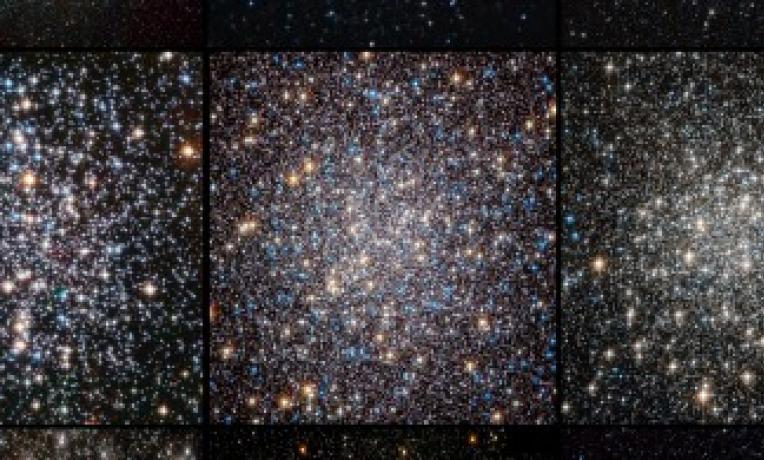How to look young when you’re not – stars reveal the secret of aging well
Some people are in great shape at the age of 90, while others feel unfit before they are 50. How fast people age is not really linked to how old they actually are — and has a lot to do with their lifestyle. A new study led by Prof. Francesco Ferraro, Advanced grantee of the European Research Council (ERC), reveals that the same is true of star clusters. This groundbreaking discovery was made with the NASA/ESA Hubble Space Telescope and is featured this week in the renowned scientific journal Nature.

Written in collaboration with the University of Bologna (Italy) and the European Space Agency (ESA)/Hubble Public Information Office
Globular clusters are spherical collections of stars, tightly bound to each other by their mutual gravity. Relics of the early years of the Universe, with ages of typically 12-13 billion years (the Big Bang took place 13.7 billion years ago), the roughly 150 globular clusters in the Milky Way contain many of our galaxy’s oldest stars.
But while the stars are old and the clusters formed in the distant past, astronomers using the NASA/ESA Hubble Space Telescope and a set of ground-based telescopes have found that some of these clusters are still young at heart. “Although these clusters all formed billions of years ago, we wondered whether some might be aging faster or slower than others” says ERC grantee Francesco Ferraro. By studying the distribution of a type of blue star that exists in the clusters, we found that some clusters had indeed evolved much faster over their lifetimes, and we developed a way to measure the rate of aging.”
Star clusters form in a short period of time, meaning that all the stars within them tend to have roughly the same age. Because bright, high-mass stars burn up their fuel quite quickly, and globular clusters are very old, there should only be low-mass stars within them. This, however, turns out not to be the case: in certain circumstances, stars can be given a new burst of life, receiving extra fuel that bulks them up and substantially brightens them. This can happen if one star pulls matter off a neighbour, when two neighbouring stars merge together, or if they collide. These reinvigorated stars are called blue stragglers, because of their blue colour, and the fact that their evolution lags behind that of their neighbours. These specific stars, with their high mass and brightness, lie at the heart of this study.
Heavier stars sink towards the centre of a cluster as the cluster ages, in a process similar to sedimentation. Blue stragglers’ high masses mean they are strongly affected by this process, while their brightness makes them relatively easy to observe.
To better understand cluster aging, the team mapped the location of blue straggler stars in 21 globular clusters. The team found that a few clusters appeared young, with blue straggler stars distributed throughout, while a larger group appeared old, with the blue stragglers clumped in the centre. A third group was in the process of aging, with the stars closest to the core migrating inwards first, then stars ever further out progressively sinking towards the centre.
“Since these clusters all formed at roughly the same time, this reveals big differences in the speed of evolution from cluster to cluster,” said Barbara Lanzoni, a member of Francesco Ferraro’s research team. “In the case of fast-aging clusters, we think that the sedimentation process can be complete within a few hundred million years, while for the slowest it would take several times the current age of the Universe.”
As a cluster’s heaviest stars sink into the centre, it eventually experiences a phenomenon called core collapse, where the centre of the cluster bunches together extremely densely. The processes leading towards core collapse are rather well understood, and revolve around the number, density and speed of movement of the stars. However, the rate at which they happen was not known until now. This study provides the first empirical evidence of how quickly different globular clusters age.


